Rare Cyclopes
by Stan Mott
Ministry of Propaganda
Cyclops SpA
Published in Road & Track’s 30th Anniversary edition, June, 1997
Many of R&T’s younger readers may be unaware that the Cyclops legend began much earlier that with R&T’s March introduction of the Cyclops II. In fact, it began before the Beginning of History (R&T June 1947), toward the end of World War II actually, around the time Allied forces began their Grand Prix race north through Italy to Berlin.
Thereafter, Piero Martini, genius creator and manufacturer of Cyclops, introduced many successful models: Cyclops in 1961, 007 in 1965, Indy & Tagliafciata in 1967, 2-Plus Turbo in 1969, and Ecce Homo in 1971. We all know and admire these machines.
But what about the rare Cyclopes? The models about which even the elder and well-informed enthusiasts may not have heard?
I am pleased to report that in celebration of Road & Track’s 30th Anniversary, Maestro Martini has instructed me to offer the following selection of rare and/or unusual Cyclops for the pleasure of all enthusiasts.

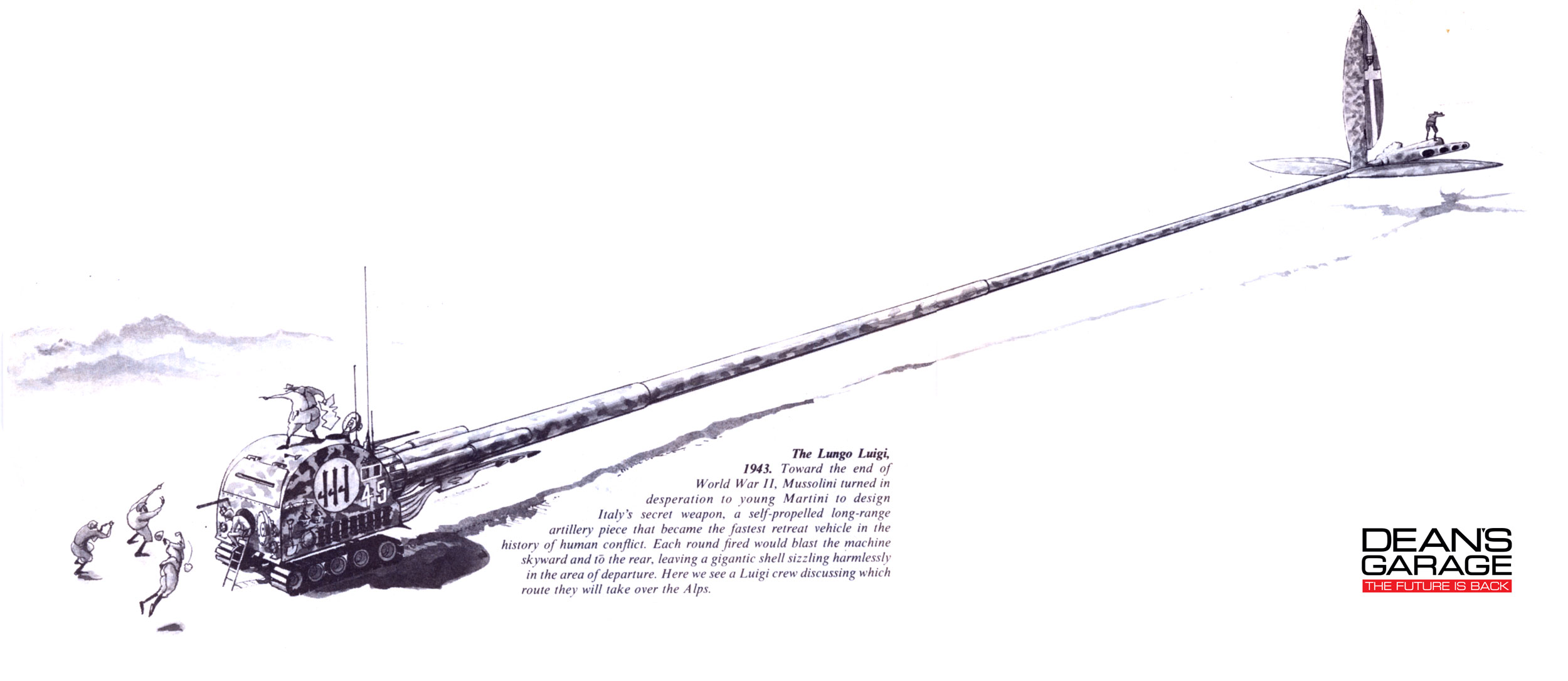
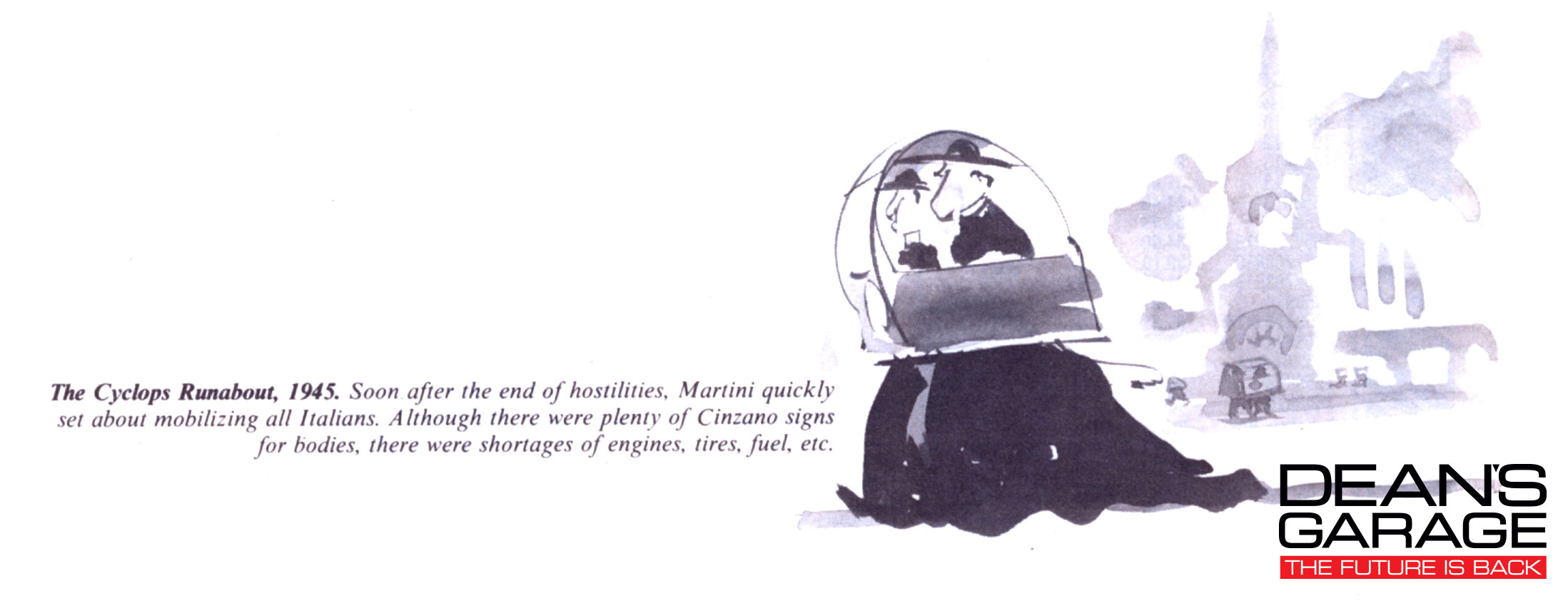
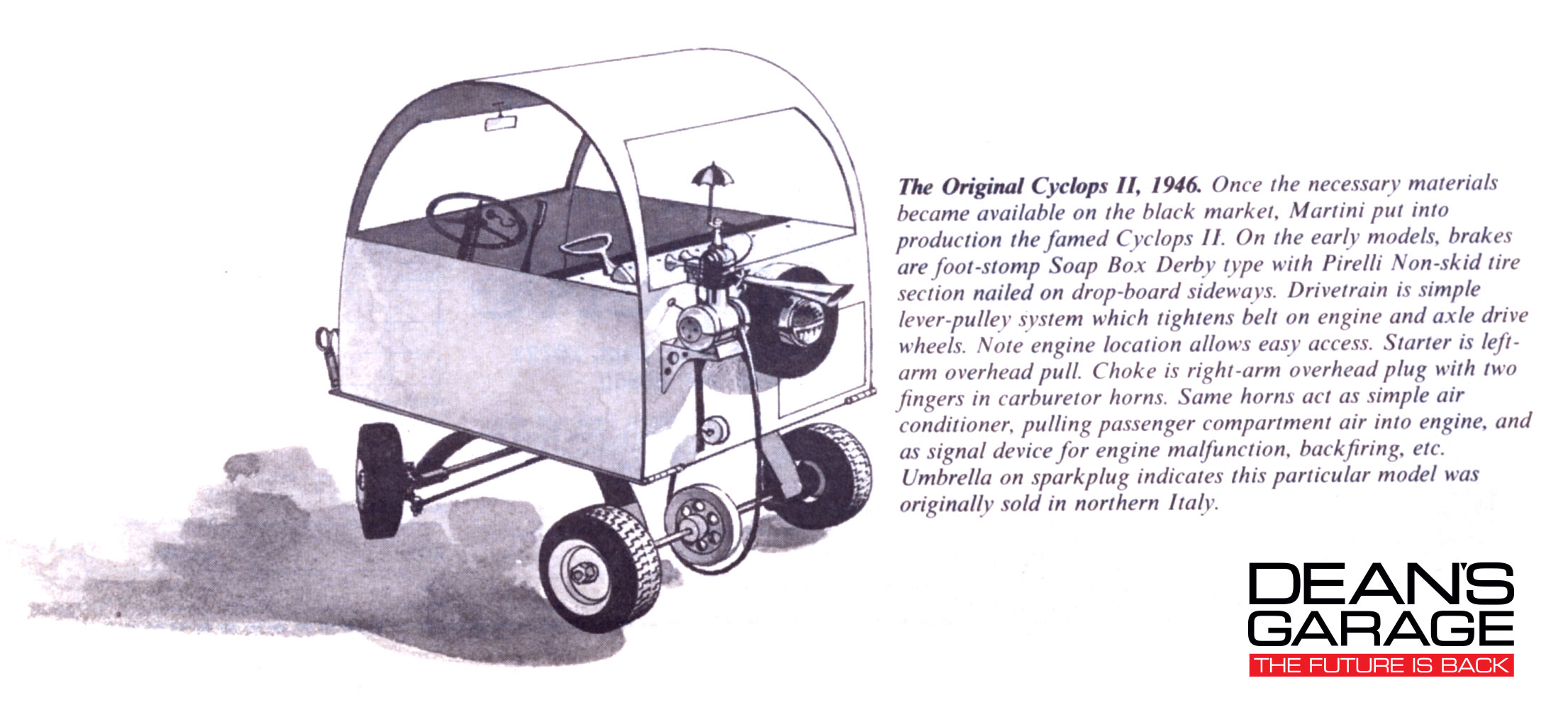
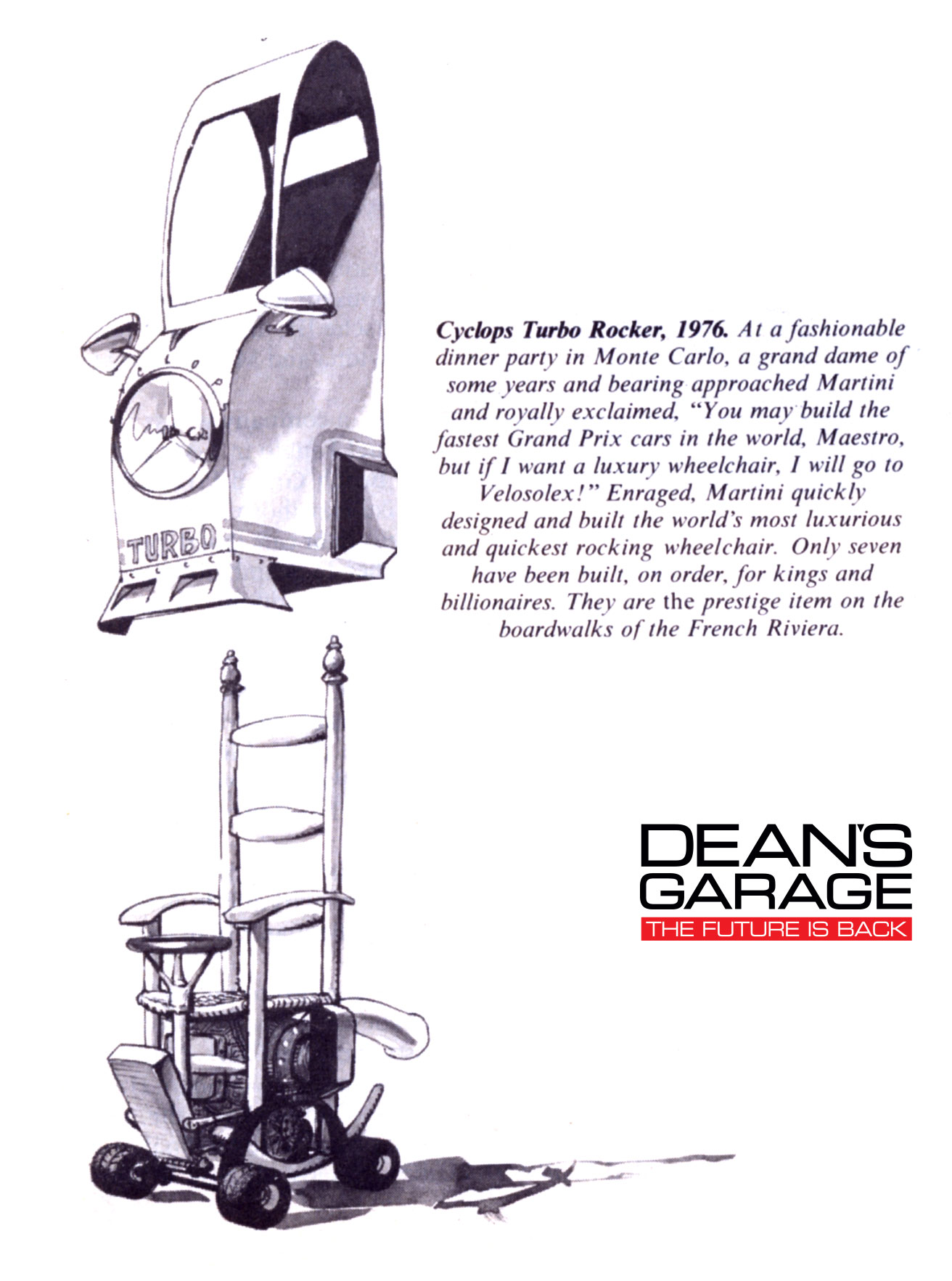
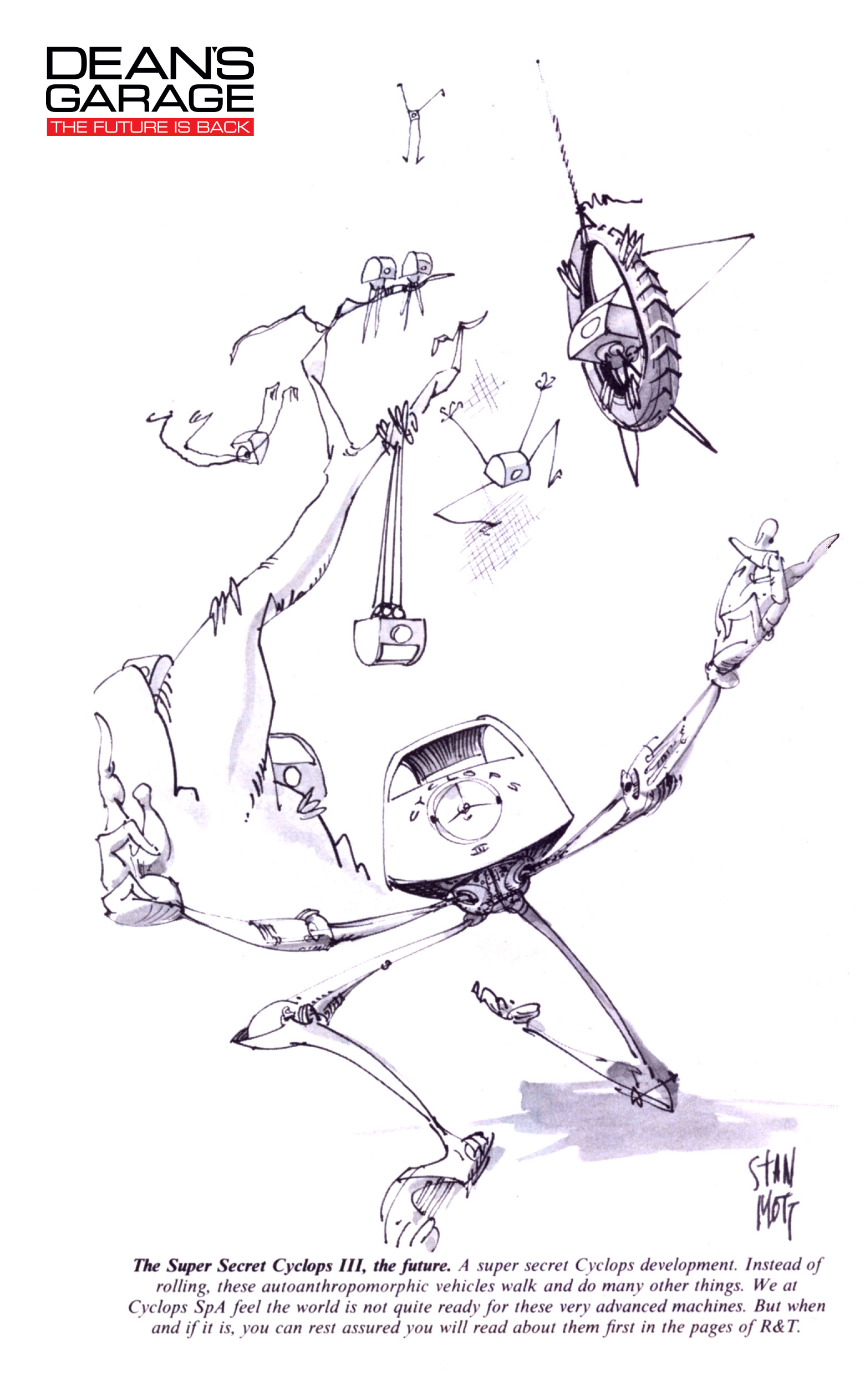
I love reading about things like this so over-the-top. Road & Track had such fun with articles like this and some readers dreamed of building such a form of transportation. Well, about 5 yrs ago I went to the CARMEL BY THE SEA car show during MONTEREY car week and several CYCLOPS were running around. I think I will wait for THE TESLA EDITION with full GPS (ha ha). Great fun to read.
THANKS KAZ
Where’s the LeMans Replica?
Stan was our feature artist many years ago at Melia. He crossed the presentation area in a Cyclops
…knees hanging out the windows. I have his original of the Chaparral vacuum cleaner. He was terrific with a very keen sense of humor back by exceptional talent. I , like Robert Cumberford, miss him. He was great.
The letter ‘e’ does not appear in Cyclops.
“Cyclopes” was the title of the article in Road & Track. Additionally, according to Miriam-Webster, Cyclopes is the plural of Cyclops.—Gary
Thank you for your comment. It is customary with misleading spellings to have noted the ambiguity in the dialog, a common rule practiced by erudite linguists.